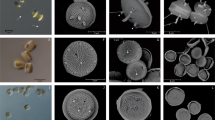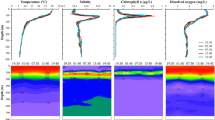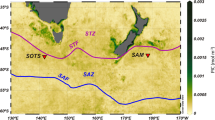Abstract
DURING the cruise of M.V. Magga Dan under charter to the Antarctic Division of the Australia Department of External Affairs during January-April, 1959, phytoplankton samples were collected by a modified Hardy Indicator, and later examined at the Commonwealth Scientific and Industrial Research Organization's Division of Fisheries and Oceanography, Cronulla. In the course of this examination, a peculiar diatom was observed on two occasions in the same sample. In each case, one valve of a cell had the characters of Coscinodiscus, the arrangement of the areolae resembling that of C. lineatus; but the valve was deeply concave. The other valve was characteristic of Asteromphalus roperianus. In one example two cells were in contact, one having the mixed character described, the other being a typical Coscinodiscus, with both valves identical. The other example was solitary, and smaller (65µ compared with 100µ), showing that it belonged to another generation.
This is a preview of subscription content, access via your institution
Access options
Subscribe to this journal
Receive 51 print issues and online access
$199.00 per year
only $3.90 per issue
Buy this article
- Purchase on Springer Link
- Instant access to full article PDF
Prices may be subject to local taxes which are calculated during checkout
Similar content being viewed by others
References
Wood, E. J. F., Crosby, L. H., and Cassie, U. V., Trans. Roy. Soc. N.Z., 86, (1959).
Author information
Authors and Affiliations
Rights and permissions
About this article
Cite this article
WOOD, E. An Unusual Diatom from the Antarctic. Nature 184, 1962–1963 (1959). https://doi.org/10.1038/1841962a0
Issue Date:
DOI: https://doi.org/10.1038/1841962a0
This article is cited by
-
New observations on the Antarctic Asteromphalus darwinii/hookeri diatom species-complex (Asterolampraceae)
Polar Biology (2023)
-
Studies onCyclotella meneghiniana Kütz
Proceedings / Indian Academy of Sciences (1973)
Comments
By submitting a comment you agree to abide by our Terms and Community Guidelines. If you find something abusive or that does not comply with our terms or guidelines please flag it as inappropriate.



